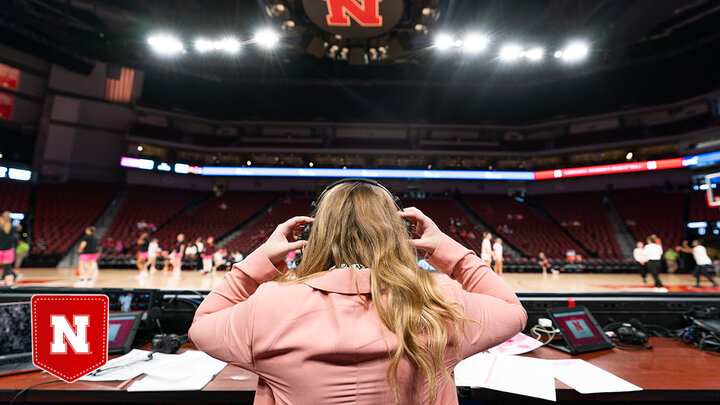Over the past five years, the College of Journalism and Mass Communications has made significant strides in fostering an inclusive and welcoming environment for students, faculty, and staff. By prioritizing diversity, equity, and inclusion (DEI) in its curriculum, student involvement opportunities, faculty recruitment, and hiring practices, the college has expanded access to journalism and mass communications education for underrepresented and first-generation students. These efforts have strengthened the college’s commitment to building a more diverse and representative media workforce.
A central focus of the strategic plan has been attracting and retaining a diverse student body. Recruitment efforts aimed at underrepresented populations have expanded, including new partnerships with Nebraska high schools and student organizations. These partnerships provide hands-on workshops led by college faculty and ambassadors, giving future college students opportunities to explore media careers while developing skills in storytelling, broadcasting, and strategic communication. Since 2020, the college has completed 310 workshops at 63 schools and 18 partner organizations in 42 communities across six states, extending its impact beyond Nebraska to build stronger pathways for students from diverse backgrounds to enter journalism and mass communications fields.
Recognizing that faculty and staff diversity is equally critical to fostering an inclusive learning environment, the college has taken concrete steps to enhance its recruitment and onboarding processes. In 2020, a faculty hiring webpage was launched to provide prospective applicants with detailed information about the college, helping to attract a more diverse pool of candidates. In 2021, the college established an onboarding program for faculty and staff, ensuring that new employees feel welcomed and supported as they transition into their roles. Further strengthening the hiring process, the college implemented the Diversity Ambassadors initiative in 2022, where ambassadors trained by the Office of Diversity and Inclusion served on search committees until ODI’s dissolution in 2024, to help ensure equitable hiring practices. This initiative has had a direct impact, with four out of six faculty hires in 2022-2023 coming from underrepresented groups.
To ensure that all students, faculty, and staff feel welcome, the college has prioritized climate assessments to monitor and improve the college environment. In 2021, the college launched an employee climate survey, providing insights into faculty and staff experiences and identifying areas for improvement. In 2024, a student climate survey was introduced to assess student experiences and guide action to foster an even more inclusive community. These efforts demonstrate the college’s commitment to listening to its members and taking proactive steps to create an environment where everyone feels valued and supported.
To support first-generation and underrepresented students once they arrive on campus, the college has worked to develop a strong mentorship and advising structure. The JOMC 100 Mentorship Program has been expanded to integrate ambassador and high school mentor pairs, ensuring that first-generation students receive guidance from peers as they transition into the college. In addition, the college is revamping workshops on applying for continuing scholarships into instructional videos that will be incorporated into both JOMC 100 and JOMC 20. These videos will coincide with an instructional campaign, ensuring that students have accessible resources to help them secure financial support throughout their academic journey.
The college has also made curricular changes to ensure a strong focus on DEI issues. As part of this effort, faculty have revised syllabi to incorporate diversity, equity, and inclusion principles, reinforcing the importance of inclusive storytelling and ethical reporting. Additionally, DEI training has been integrated into monthly all-college meetings, providing faculty and staff with ongoing access to resources that promote inclusivity and equity
Student-led initiatives have played a vital role in advancing DEI goals. The Multicultural Students in Media organization was established to provide a space for students from diverse backgrounds to connect, network, and advocate for greater representation in media industries. The Buoy and Heartland practicum programs have also been actively engaged in telling the stories of underrepresented communities, ensuring that student work reflects the diversity of the audiences they serve.
By fostering an inclusive learning environment, expanding access to international experiences, strengthening mentorship and advising programs, and implementing best practices in faculty hiring and retention, the College of Journalism and Mass Communications is ensuring that its graduates enter the workforce with a deep understanding of diverse perspectives and a commitment to inclusive storytelling. These efforts not only enrich the student experience but also contribute to the development of a media landscape that truly represents the whole state and the broader world beyond it.
Targets | Aim | 20-21 | 21-22 | 22-23 | 23-24 | 24-25 |
| 70% of faculty and staff will be enrolled in or have completed diversity, equity and inclusion training | 6 | 70% | 82.6% | 100% | 100% | 100% |
| Increase enrollment of students from underrepresented ethnic/racial groups by 7% | 6 | 224 | 211 | 210 | 236 | 232 |
| Increase enrollment of international students by 10% | 6 | 48 | 39 | 33 | 26 | 19 |
| Increase enrollment of students in study abroad programs by 10% | 6 | 26 | 13 | 22 | 22 | 30 |
| Increase the number of first-generation who apply to the college by 10% | 6 | 125 | 136 | 135 | 142 | 190 |
| Increase the number of underrepresented students who apply to the college by 15% | 6 | 119 | 124 | 137 | 115 | 215 |




